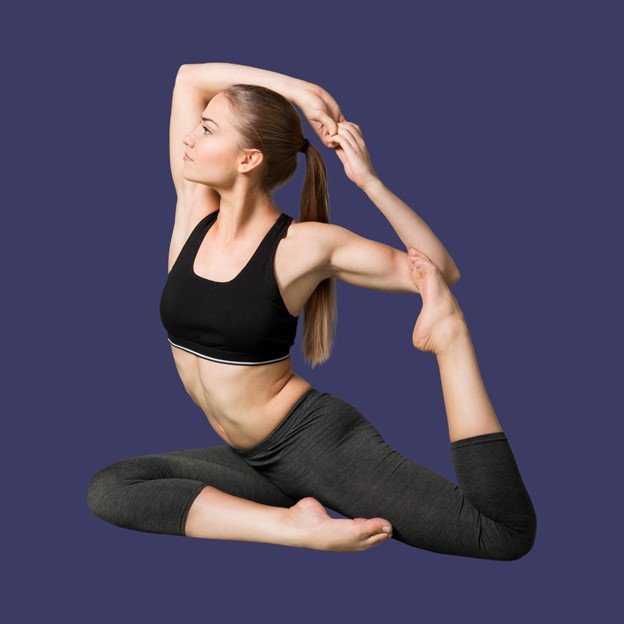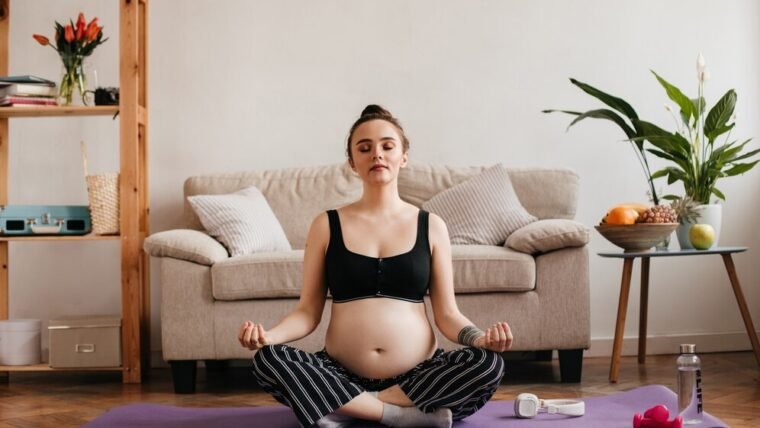Yoga Workouts for Breast Firmness in 2024: Elevating Women’s Health
In the ever-evolving landscape of wellness, 2024 presents a promising breakthrough for women’s health. Enter the world of ‘Breast Yoga Workouts.’ These innovative routines seamlessly blend ancient yogic wisdom with cutting-edge science to empower women to actively nurture their well-being. The transition from traditional practices to these contemporary approaches signifies a shift towards holistic health. Join us as we explore the dynamic realm of breast yoga workouts, unveiling their potential to elevate women’s health and wellness in the present year.

How yoga can benefit breast health
Yoga provides several valuable benefits for breast health. Firstly, it enhances circulation in the chest area. The active postures in yoga can improve blood flow, which, in turn, reduces the risk of developing breast cysts and tumors.
Additionally, yoga involves stretching and strengthening the chest muscles. These exercises are essential in promoting breast health and minimizing the chances of injuries. The simple act of stretching and strengthening can have a significant impact.
Moreover, practicing yoga can also lead to reduced tension in the neck and shoulders. This, in turn, contributes to improved breast health and a lower likelihood of experiencing pain or discomfort. By actively relieving tension, yoga becomes a holistic approach to enhancing overall breast health.

25 yoga workouts for breast health
Camel Pose (Ustrasana): This yoga pose involves kneeling and bending backward, creating a deep arch in your spine. It’s particularly effective in promoting chest expansion and enhancing flexibility. These movements can relieve tension in the chest, which is beneficial for breast health.
Bridge Pose (Setu Bandha Sarvangasana): The bridge pose focuses on strengthening the chest muscles and improving overall posture. It also aids in the reduction of neck and shoulder tension. Engaging the chest area indirectly supports breast health.
Cat-Cow Pose (Marjaryasana-Bitilasana): This dynamic duo of poses is excellent for enhancing spinal flexibility. The arching and rounding of your back during the Cat-Cow sequence promote a wide range of motion in the upper body, indirectly contributing to breast health.
Child’s Pose (Balasana): The child’s pose is a resting position that helps relieve tension in the chest and shoulders. It is an ideal posture for relaxation and stress reduction, which can indirectly support breast health.
Cobra Pose (Bhujangasana): The Cobra Pose involves arching your back and lifting your chest. It’s a dynamic posture that promotes chest opening and increased flexibility in the chest area, contributing to breast health.
Downward-Facing Dog (Adho Mukha Svanasana): This well-known pose provides a full-body stretch, indirectly benefiting the chest region. It promotes flexibility and strength in the upper body, helping to maintain good breast health.
Fish Pose (Matsyasana): The fish pose is excellent for expanding the chest. It’s especially useful for relieving tension in the upper body, making it a valuable addition to yoga routines focused on breast health.
Garland Pose (Malasana): This pose primarily works on hip flexibility, but it also strengthens the chest area. Promoting better posture and chest alignment contributes indirectly to breast health.
Half Moon Pose (Ardha Chandrasana): The Half Moon Pose enhances overall balance and engages the chest muscles. This not only supports your balance and stability but also contributes to improved breast health.
Headstand (Salamba Sirsasana): The headstand is an advanced yoga posture with numerous benefits for breast health. It improves circulation, increases chest strength, and offers a unique perspective on yoga practice, making it a powerful addition to your routine.
Legs-Up-the-Wall Pose (Viparita Karani): Lying on your back, you should align your legs vertically against a wall to achieve this stance. This healing pose promotes calmness and helps ease tenseness and swelling in the legs, which also improves overall well-being.
Lion Pose (Simhasana): The lion pose involves opening your mouth wide and sticking your tongue out. This unique posture is known for relieving tension in the face and throat, promoting emotional release, and reducing stress.
Locust Pose (Salabhasana): In the locust pose, you lie on your stomach and lift your chest and legs off the ground. This pose strengthens the back and can help alleviate back pain, which can indirectly contribute to improved overall health.
Monkey Pose (Hanumanasana): The monkey pose is an advanced yoga posture that involves a deep stretch of the legs. This intense stretch enhances flexibility in the hips and legs, improving overall mobility.
Plow Pose (Halasana): In the plow pose, you fold your body over and bring your legs behind your head. This posture can promote spinal flexibility and stimulate the thyroid gland, which can contribute to hormonal balance.
Shoulderstand (Sarvangasana): The shoulderstand is an inversion pose that involves balancing on your shoulders and neck. This pose improves blood circulation, enhances thyroid function, and strengthens the upper body.
Side Angle Pose (Parsvakonasana): The Side Angle Pose is beneficial for stretching and strengthening the legs, especially the quadriceps and hamstrings. This can improve leg strength and flexibility.
Standing Forward Bend (Uttanasana): The Standing Forward Bend is excellent for stretching the entire back of the body, promoting flexibility in the spine and hamstrings. It also calms the mind and reduces stress.
Standing Split Pose (Urdhva Prasarita Eka Padasana): This challenging pose demands not only balance but also a high degree of flexibility. By lifting one leg into the air while keeping the other planted, it places considerable emphasis on the leg and hip muscles. This, in turn, strengthens the legs and helps improve overall stability. The pose is a testament to your progress in flexibility and strength, as it requires focus and patience to master.
Tree Pose (Vrksasana): The tree pose is all about balance. If you stand on one leg with the other foot resting on the inner thigh of the standing leg, it promotes core strength and stability. Balancing in this posture challenges your focus and concentration, making it a valuable addition to your practice. It symbolizes the strength and tranquility that a tree exhibits, helping you connect with nature and find inner serenity.
Triangle Pose (Trikonasana): The triangle pose is an excellent posture for stretching and strengthening the legs, particularly the inner thighs and hamstrings. As you extend your arms to create a triangular shape with your body, it promotes better spinal alignment and posture. It also opens the chest, allowing you to breathe deeply, fostering a sense of spaciousness in both body and mind.
Twisted Triangle Pose (Parivrtta Trikonasana): This pose combines a forward bend with a twist. As you reach down toward the floor and twist your upper body skyward, it significantly improves spinal flexibility and encourages detoxification. The twist aids in wringing out toxins from the digestive system while also enhancing spinal mobility and balance.
Warrior I Pose (Virabhadrasana I): The Warrior I Pose is a powerful stance that not only strengthens the legs but also opens the chest and heart. The outstretched arms and lifted chest promote a sense of empowerment and confidence. It’s a pose that encourages you to stand tall, both physically and emotionally.
Warrior II Pose (Virabhadrasana II): In this pose, your legs are spread wide, with your extended arms forming a T-shape. This enhances leg strength, primarily targeting the quadriceps and hamstrings. The extended arms also open the chest, providing a deep stretch and increased stamina.
Warrior III Pose (Virabhadrasana III): Warrior III demands both balance and strength. As you extend one leg behind you and lean forward, it engages your core, leg muscles, and stabilizing muscles. This pose helps you develop not only physical stability but also a strong and confident stance in both your yoga practice and daily life.

Tips for Practicing Yoga for Breast Health
Listen to Your Body: The first and most crucial tip is to always listen to your body. If a specific pose or movement doesn’t feel right for your body, it’s essential to avoid it. Respect your body’s signals to prevent any strain or injury.
Modify Poses as Needed: Yoga is a highly adaptable practice. If you find that a particular pose is too challenging or causes discomfort, don’t hesitate to modify it. There are often variations or props that can make a pose more accessible and enjoyable. Modifying poses ensures that you can still benefit from your practice while avoiding unnecessary strain.
Use Props: Yoga props, such as blocks, straps, and bolsters, can be valuable allies in your practice. They provide extra support and aid in achieving proper alignment. If you’re looking to make poses more accessible or enhance your form, don’t hesitate to use props. They can assist you in getting the most out of your practice.
Be Consistent: To reap the full benefits of yoga for breast health, consistency is key. Aim to practice yoga for at least 30 minutes, three times per week. Consistency not only allows your body to adapt and improve but also fosters a sense of discipline and commitment to your well-being.

Conclusion:
In conclusion, practicing yoga is a safe and effective way to enhance breast health. By incorporating yoga into your regular routine, you can not only work on improving breast health but also foster overall well-being. These tips ensure that your yoga practice is both safe and tailored to your unique needs, allowing you to reap the maximum benefits from this ancient practice for your health and wellness.
BY SWAMI SRI RAM
Ancient Himalayan Lineage of Yogis



